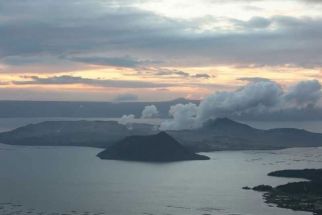NAIA head urges full development of Clark airport
June 16, 2004 | 12:00am
CLARK FIELD, Pampanga — Ninoy Aquino International Airport (NAIA) general manager Edgardo Manda urged yesterday the full development of the Diosdado Macapagal International Airport (DMIA) here, saying that the NAIA is "not technically ready" for new large aircraft to be fielded by Singapore Airlines by 2006.
"NAIA’s main runway 06-24 can absorb the impact of the double-decker Airbus 380, but the aircraft’s wing span is so wide that it would reach up to the taxiway. This means that all other aircraft would have to wait until the Airbus 380 has either parked or taken off, thus resulting in flight delays," Manda told The STAR. He met the manufacturers of the large aircraft last week
As a temporary measure, the NAIA is set to bid the rehabilitation of runway 13-31, but merely to provide enough taxiway room to the Airbus 380.
The project, which will be bid out within the next 60 days, will cost some P300 million.
Still, the Airbus 380’s wing span would prevent it from being connected with the passenger terminal through an aerobridge so it would have to be parked in a "remote" area within the NAIA, Manda said.
"This would cause some inconvenience to passengers since it would take about 30 minutes for them to reach the passenger terminal," he said.
Manda, however, said that some airports abroad, particularly in Los Angeles, are also confronted with similar problems.
He said he is not aware of other airlines planning to launch the Airbus 380 in the coming years.
"We simply do not have enough space for the development of another runway at the NAIA," he said.
He lamented that the mothballed Terminal 3, which could otherwise provide enough space for the Airbus 380, could not be operated due to controversies surrounding it.
"This is one reason why we want to fully develop the DMIA as soon as possible," he said.
He noted that the NAIA, in a memorandum of agreement with the Clark Development Corp. (CDC), has assumed planning, management and operation of the DMIA.
He said the DMIA, which covers some 2,500 hectares, has two runways, each 3.2 kilometers long. However, its passenger terminal, left behind by the US Air Force when it abandoned this former military base in 1991, can accommodate only about 1.5 million passengers a year.
The government is also developing a modern railway system between Clark and Metro Manila to complement plans to transform the DMIA into a premier international airport, as mandated by an executive order issued by former President Fidel Ramos in 1994.
A Chinese consortium is doing the project, which also involves relocating tens of thousands of families living along the old railway tracks of the Philippine National Railways which will be used for the project.
Manda said the NAIA has also become overcrowded, with five to eight percent growth in passengers annually.
"We used to have 4.5 to five million passengers annually, but now we process about seven million," he said.
He also noted an increase of about seven percent in aircraft movement at the NAIA.
"NAIA’s main runway 06-24 can absorb the impact of the double-decker Airbus 380, but the aircraft’s wing span is so wide that it would reach up to the taxiway. This means that all other aircraft would have to wait until the Airbus 380 has either parked or taken off, thus resulting in flight delays," Manda told The STAR. He met the manufacturers of the large aircraft last week
As a temporary measure, the NAIA is set to bid the rehabilitation of runway 13-31, but merely to provide enough taxiway room to the Airbus 380.
The project, which will be bid out within the next 60 days, will cost some P300 million.
Still, the Airbus 380’s wing span would prevent it from being connected with the passenger terminal through an aerobridge so it would have to be parked in a "remote" area within the NAIA, Manda said.
"This would cause some inconvenience to passengers since it would take about 30 minutes for them to reach the passenger terminal," he said.
Manda, however, said that some airports abroad, particularly in Los Angeles, are also confronted with similar problems.
He said he is not aware of other airlines planning to launch the Airbus 380 in the coming years.
"We simply do not have enough space for the development of another runway at the NAIA," he said.
He lamented that the mothballed Terminal 3, which could otherwise provide enough space for the Airbus 380, could not be operated due to controversies surrounding it.
"This is one reason why we want to fully develop the DMIA as soon as possible," he said.
He noted that the NAIA, in a memorandum of agreement with the Clark Development Corp. (CDC), has assumed planning, management and operation of the DMIA.
He said the DMIA, which covers some 2,500 hectares, has two runways, each 3.2 kilometers long. However, its passenger terminal, left behind by the US Air Force when it abandoned this former military base in 1991, can accommodate only about 1.5 million passengers a year.
The government is also developing a modern railway system between Clark and Metro Manila to complement plans to transform the DMIA into a premier international airport, as mandated by an executive order issued by former President Fidel Ramos in 1994.
A Chinese consortium is doing the project, which also involves relocating tens of thousands of families living along the old railway tracks of the Philippine National Railways which will be used for the project.
Manda said the NAIA has also become overcrowded, with five to eight percent growth in passengers annually.
"We used to have 4.5 to five million passengers annually, but now we process about seven million," he said.
He also noted an increase of about seven percent in aircraft movement at the NAIA.
BrandSpace Articles
<
>
- Latest
- Trending
Trending
Latest
Trending
Latest
Recommended





























